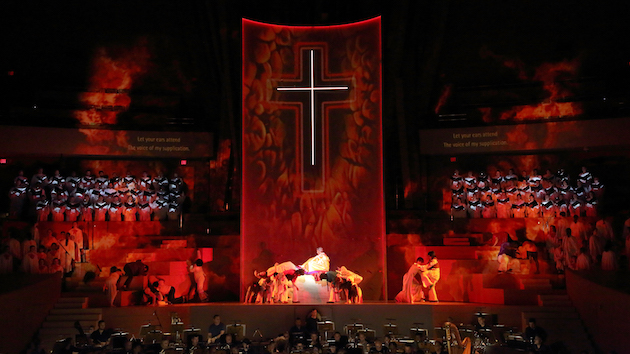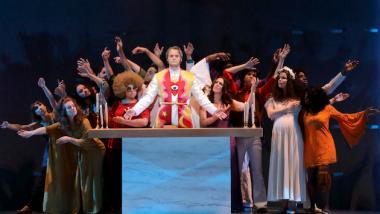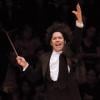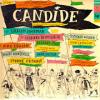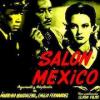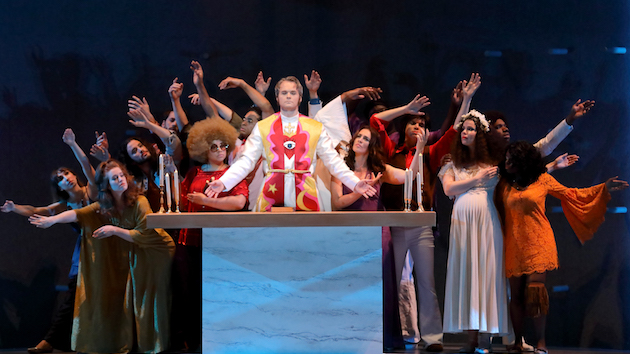
When Elkhanah Pulitzer was asked by the Los Angeles Philharmonic to direct a new production of John Adams’s Nixon in China within the limited stage space of Walt Disney Concert Hall, the result was remarkable — a television-based approach to the opera that added a “you are there” level of documentary clarity to that pivotal moment in history.
Unfortunately, the approach Pulitzer and her collaborators chose for their staging of Leonard Bernstein’s Mass, which opened Thursday last week with Gustavo Dudamel conducting the Los Angeles Philharmonic and a host of soloists, choruses, and dancers, took a much safer approach. It sidestepped any sense of actual history in favor of a succession of psychedelic, “flowers in your hair” clichés. It was an opportunity lost, because at the moment of Mass’s premiere (to celebrate the opening of the Kennedy Center, Sept. 8, 1971), there was more than enough reality to go around. America was torn apart by assassinations, the Vietnam War, the killings at Kent State, the Attica prison riots, and the trial of the Black Panthers, among other things.
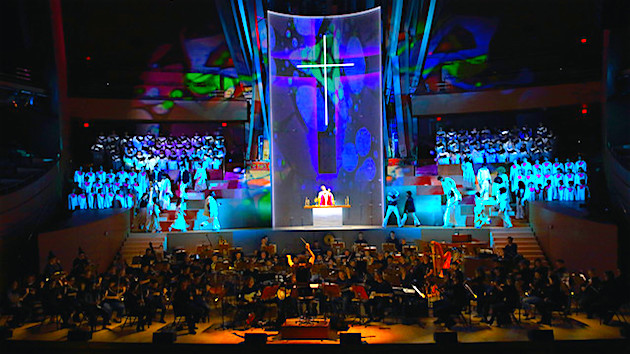
This was the America Bernstein faced when he accepted the commission. He wanted Mass (Bernstein’s formal title was MASS: A Theater Piece for Singers, Players, and Dancers) to follow the liturgy of traditional Catholic mass while making an ecumenical statement about the nature of faith in a world gone mad. Its musical vocabulary would be eclectic, combining traditional forms of the mass, with folk music, a rock band, jazz, dancing, and rhapsodic interludes of the type he’d created to such advantage in West Side Story.
This was also the era of Hair, Jesus Christ Superstar and Godspell when popular culture and religion were forming a new hybrid style of Broadway musical, which is probably why Bernstein chose Stephen Schwartz, who wrote Godspell, to create most of the lyrics for Mass, including: “Sing God a Simple Song,” the gospel sermon, “God Said,” “I Go On,” and “Things Get Broken.”
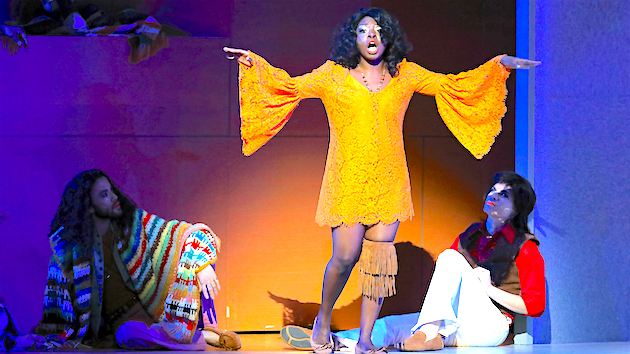
The performance Thursday began with a prerecorded choral segment that passed the words of the Kyrie from speaker to speaker. Then, to the simple strumming of a guitar, Ryan McKinny made his entrance as the Celebrant, wandering onstage with the casual air of a John Denver dressed in jeans, t-shirt, and tennies, to the lyrics “Sing God a simple song: Lauda, Laudē. Make it up as you go along.”
From this point on, the Celebrant finds himself in a push-pull of forces as his simplicity of faith is tested by dogma and the trappings of organized religion, represented symbolically by a piling on of vestments. His simple faith is also tested by the outspoken voices of a street chorus advocating the need to take a stand and resist “The Man” and the status quo. The counter-culture forces in this performance included a band of free-spirited hippies and a boy soprano, Soren Ryssdal.
Bernstein combines the traditional sections of the Mass Ordinary (the Kyrie, Credo, Gloria, Agnus Dei) with contrasting section in the pulsing, syncopated energy of jazz, gospel, and rock. And Dudamel, who is no stranger to Bernstein’s music, produced an abundance of polyphonic grandeur as in the “Thrice-Triple Canon” and the powerful “Dona nobis pacem” as well as the kind of rhythmic drive and melodic serenity that pervades West Side Story.
I did, however, find myself closing my eyes more than once in order to fully appreciate the excellent musical performance and avoid the day-glow costumes by Christine Cook and the all-too-predictable gyrations of Laurel Jenkins’ choreography. These were the prepackaged images of the ’60s, not actual context.
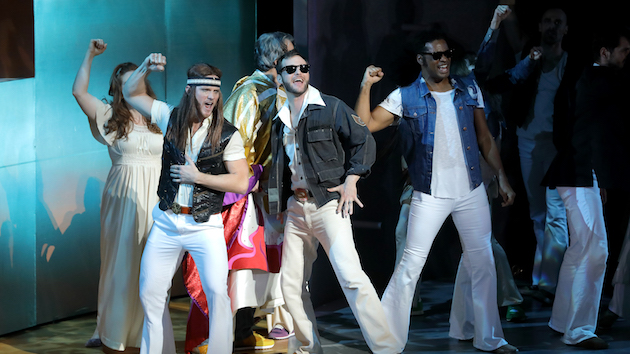
At the time of its premiere, the reaction to Mass was as conflicted as the era. The left wing condemned Bernstein for not taking a bolder stand against the war. The right wing, including President Nixon (who stayed away from the grand opening), labeled it subversive. The FBI even notified Nixon that the Latin text might contain antiwar messages, which could cause embarrassment to the President. It’s ironic that Ryan McKinny last appeared on stage at Disney Hall portraying Nixon.
Subsequent productions of Mass have chosen to play up or down the work’s religious format. This production embraces it and all the action takes place on an altar beneath a glowing, neon cross. The Christian symbolism is so overpowering, when the Celebrant/Priest commanded, “Let us pray,” I think a lot of people in the audience weren’t sure how to react.
This could have been the perfect time, as the world celebrates the Bernstein centenary, to present a fresh, more radicalized vision of Mass. But that was not to be. If David Crosby’s famous line — “If you can remember the ’60s, you weren’t there” — is a one-sided view of the ’60s, then deliberately forgetting the context and history behind Mass, the way this production does, is even worse.
